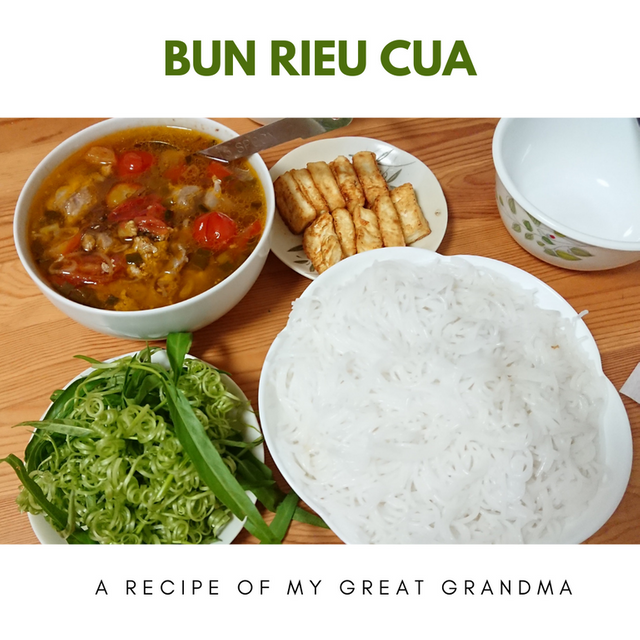Ricefield Crab noodle soup - Comfort recipe from my great grandmother
What is a recipe that you've brought with you from your childhood that you make today, and what is the childhood memory that comes with it? How does it make you feel?
I've been thinking about my favourite childhood dishes that I still make these days. I love spring rolls that my Mum made for us whenever we had a big get-together at home. I also love chicken noodle soup that my dad cooked on the first day of the year (Tet holiday). However, I can't recall many memories about them. Oh wait, there is one dish that I do remember vividly. I know it has to be that one.

I used to live with my great grandmother when I was small. As my parents were busy with work at that time, they sent me and my brother to live with our great grandparents. It was a way to keep them company and also they can help my parents taking care of us.
My great grandmother was a good cook. She always made yummy food for us, with some veggies from her little garden. Today, I am going to tell you a special meal that she used to prepare for the whole family with a little help from my brother and me. It's Ricefield Crab Noodle Soup - A Vietnamese noodle soup with ricefield crabs. It is eaten with a lot of fresh veggies and Vietnamese herbs like water spinach stems (Rau Muống) and young banana flowers.
Unlike other Vietnamese noodle soup, you don't have to eat this meal when it's hot, because Summer in Vietnam is very hot so we like to eat this meal cold. However, it is not an easy meal to make, actually it was quite time-consuming back then.

So whenever my great-grandma said she would make that dish, my brother and I would go to the rice field near home to catch some Crabs, around 30-40 would be enough for a family of 6 people.
I remember it was quite easy for us to catch fish, crabs and shrimp from our rice fields and rivers. Especially when the rice crop is over, we just need to pick them up from the fields. Sometimes, we got too many and my mother would have to sell them in the market. Thinking back, we shouldn't do it as it harms the ecosystem but at that time, we were too small to understand it.
Anyway, after getting enough crabs, we would leave them in a pot with water so they could clean themselves. After one or two hours, we would start preparing the meal.
I didn't like the task of removing the shelves from the crabs as it was easy to get hurt by the crabs. So I always helped my great grandmother to get the meat out of the shelves. After that, she would use a mortar and pestle to grind the crab body, then add water and filter it to get the sweet and rich flavour for the soup. This is key to get a unique and fresh flavour. Trust me it is much better than the crab soup paste you buy in supermarkets.
Cooking is quite simple. The first step is to sauté the crab meat with garlic and shallots, adding tomatoes and some fish sauce to create the perfect aroma. She then used another pot to cook the broth. Her secret is cooking it in low heat so the crab meat forms a nice and big chunk later. That's my favourite part and I always ask her for it. When the soup starts boiling, she would then prepare the noodles.
The last part is getting the fresh veggie and herbs from her garden. We would choose a small and young banana flower so it's sweet and nice to eat.
Even though I've tried to cook it many times, it is really hard nowadays to recreate her recipe. Instead of fresh crab from my rice fields, I only can get frozen crabs from a supermarket. And I can't get the banana flower here in New Zealand.
However, whenever I had a chance to eat it, I always remember a cool evening after a hot summder day, in our great grandparents' old house, six of us would all sit on the deck and happily eating this special meal together. I could notice it was so good that everyone ate more than normal.

